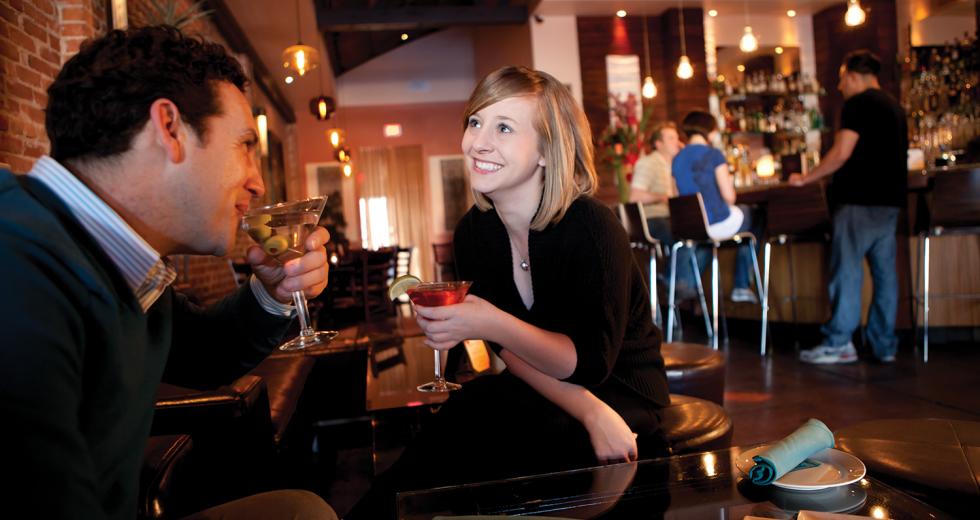Opportunity, timing and a willingness to assume entrepreneurial risk led Kevin Hernandez to plan his second startup on the trendy stretch of Stockton’s Pacific Avenue, known as the Miracle Mile.
Hernandez, a native, scored a hit last year with the opening of Ave on the Mile, a lounge and bistro with a hip, Bay Area-inspired ambience.
This time, he and business partner Ryan Hanyak want to create a pub where customers can sample a variety of classic beers, a format of Ave, but economic development officials say it plays to an untapped market in the area.
The action at Ave has contributed to the renaissance of an old shopping district. There’s a sense on the Miracle Mile that this is not only a hot spot for entrepreneurs with new ideas, but an ongoing experiment in urban reinvention.
“We are creating a midtown area that will hopefully put a mark on the city,” Hernandez says.
But there is another reality as well. In tough economic times, projects such as these often hit a financial wall. Traditional lenders are typically reluctant to make loans to small businesses with big dreams, given the risks of unproven concepts, untested markets and a cash-strapped economy.
That’s why Hernandez and Hanyak turned to the city of Stockton’s Small Business Micro Loan Program, a locally conceived, federally funded assistance plan. Interest rates start at the current prime rate plus 2 percent, with a maximum loan term of five years, for just about any business need. The program offers loans from $3,000 to $30,000 and has received 18 applications since its launch last July.
Another microloan, limited strictly to the downtown core, is offered by the Downtown Stockton Alliance. It began lending three years ago to qualified applicants under the Downtown Stockton Enterprise Loan Fund and makes available amounts from $3,000 to $50,000.
“The microloan program allows us to preserve the authenticity of our community by enabling our residents to have a stake in the downtown as business owners and employers,” says Emily Baime, marketing director for the alliance.
In 2008, Carlos Chitiva received a $50,000 loan to upgrade the interior and patio areas at his sports bar and grill, Chitiva’s, on the Stockton Waterfront. He opened for business in 2005 when hopes were high for a downtown revival following openings of a ballpark, arena and hotel. Despite the economic downturn, the loan has put Chitiva’s in a better position to capitalize on its proximity to the city’s newly completed marina development and the prospect of increased tourism.
“The fact that the business was already running and that we had a good reputation helped me get the loan,” Chitiva says. “The improvements have helped my business, and I’m excited about our prospects with marina construction finished and the economy turning around this year.”
Janice Miller, program manager for Stockton’s Office of Economic Development, says the microloan program allows more small businesses to take a risk to retain or expand their customer base.
“Our loans help business owners become more competitive by offering additional products and services,” she says. “We also want to make sure that we can provide some aid to assist in the growth of full- and part-time jobs.’’
Miller and Greg Folsom, deputy director of economic development, guided Hernandez and Hanyak through the application process and called in experts, such as Nathan McBride of the Small Business Development Center, to scrutinize the proposal’s business plan and profit projections.
“They’ve been nothing but helpful,” Hernandez says of the business development specialists. “They were realistic and positive. I feel I got better service than (at) a bank.”
Says Folsom: “Kevin has a really exciting, existing business, and his new venture sounded like an excellent opportunity.”
Several blocks south of Ave, at Green’s Nutrition, nutritionist Eunice Green secured a microloan that allowed her to take her 16-year-old business out of an economically disadvantaged neighborhood and relocate it into a former bank.
Green has tripled her retail space, expanded shelving, added refrigeration for frozen health foods and gained visibility to more auto and foot traffic. She’s also displaying an herb selection in a bank vault.
“Some people said I was nuts to make the move because of the economy,” Green says. “They said everybody was downsizing or closing. But I just felt so strongly that I needed to be here and gain exposure in one of the trendiest areas in town.”
Microloan officials agreed it was a good match. Still, a loan is no guarantee of success. Hernandez and his partner are, after all, playing a hunch and shaking the dice. Will their new pub lure locals hungry (and thirsty) for upscale alternatives? Will the new venture follow Ave as one of the town’s hot gathering places?
“I’m putting a big leap of faith in Stockton,” Hernandez says. “This is where I was born.”
McBride says this may be the right time for market-savvy opportunists to take that leap.
“There are some signs the economy is starting to improve,” McBride says. “For some entrepreneurs, it means now is a good time to jump on the front end of the wave. I’m expecting to see more of this in the coming year. It’s a good time to look for the opportunities and be the first to take advantage of them.”
Recommended For You

The Wine on Miracle Mile
Sacramento sommelier Paul Marsh joins Stockton’s business renaissance
For the past 10 years, Paul Marsh has pledged himself to the pursuit of wine. In Chico, he learned the intricacies of its fruit by planting and harvesting a vineyard. With Kendall Jackson, he learned to sell. At The Firehouse Restaurant in Old Sacramento, he was educated on the finer points of building a wine collection in a hospitality setting, and he became a certified sommelier.

Consult & Trust
Local banks offer more than transactions
Some banks in the Capital Region are placing more emphasis on customer service and trust as they battle for quality clients in an ever-changing market.



